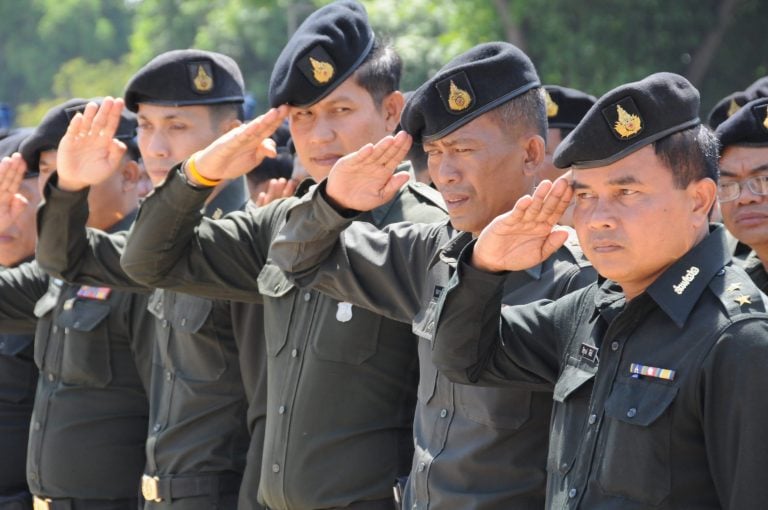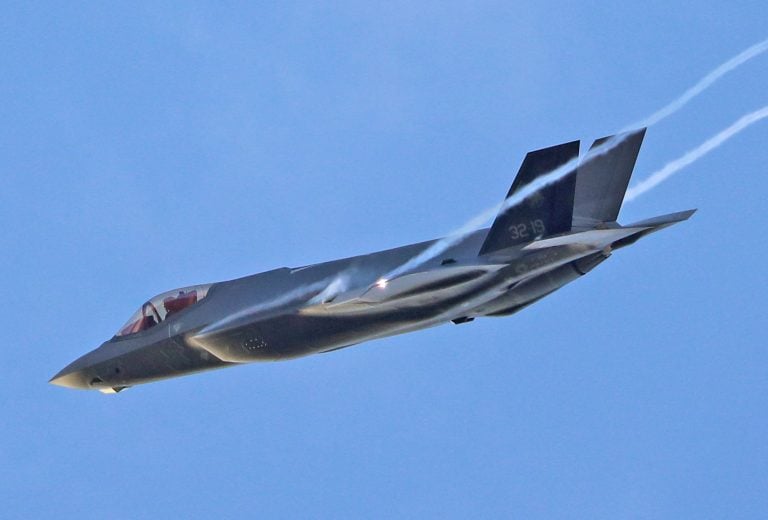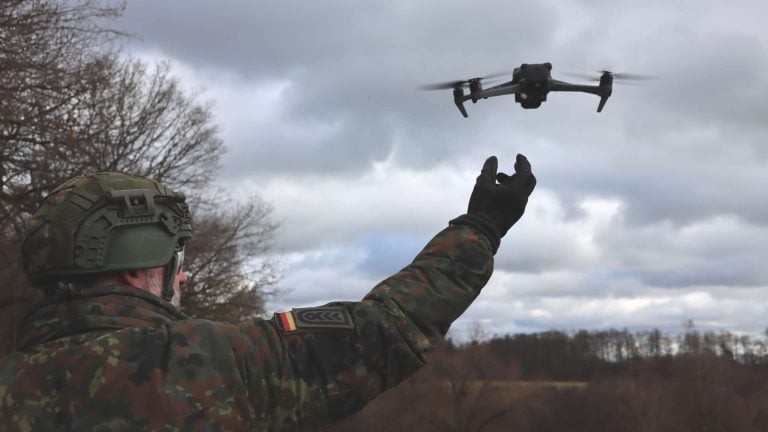The US Army is currently assessing portable counter-unmanned aerial systems (C-UAS) to enhance the protection of dismounted troops from drone threats in Germany. This evaluation is taking place in Bavaria and forms part of a broader initiative aimed at identifying the most effective next-generation technologies for combatting drone warfare.
During the trials, soldiers are testing a variety of systems that include wearable technologies, vehicle-mounted options, and rifle-integrated solutions aimed at improving the capabilities of small units. Among these solutions is the “Soldier Kit,” developed by the Danish company MyDefence. This wearable equipment features the “Wingman” detector, which allows for real-time monitoring of Unmanned Aerial System (UAS) activities, along with “Pitbull” jammers designed for precise disruption of drone targets. Weighing just 1.3 kilograms (2.8 pounds), the equipment is designed for sustained troop mobility and can either be attached to tactical gear, concealed in a bag, or integrated into a combat uniform.
In addition to the Soldier Kit, the trials include the American-made EchoShield, a 17-inch (43-centimeter) radar system capable of detecting adversarial forces, nano-UAS, manned aircraft, and ground vehicles. The EchoShield has a range of up to 30 kilometers (19 miles) and can be utilized in both vehicle-mounted and stationary configurations, ensuring effective coastal and airspace management.
Moreover, troops are employing Smartshooter attachments on their rifles for direct engagement of hostile drones. This Israeli-made accessory transforms an existing rifle into an anti-UAS gun and typically measures 164 millimeters (6 inches) in length, with a run time of approximately 70 hours for assisted precision targeting.
The trials involve personnel from the 2nd Cavalry Regiment, an agile unit comprising around 4,800 soldiers based at the Rose Barracks in Vilseck. This regiment specializes in a wide range of operations in support of the Pentagon’s European responsibilities and NATO efforts. Staff Sgt. Matthew Salinas, a UAS operator with the regiment, commented on the importance of the project, stating, “This has been paramount for us. It has been allowing us to be ahead of the curve.”
Following the trials, the evaluated technologies will be deployed during a live-fire exercise scheduled for August in Poland, where their effectiveness will be reassessed in a realistic combat environment. This ongoing focus on counter-drone capabilities highlights the military’s commitment to adapting to evolving threats in modern warfare.



















